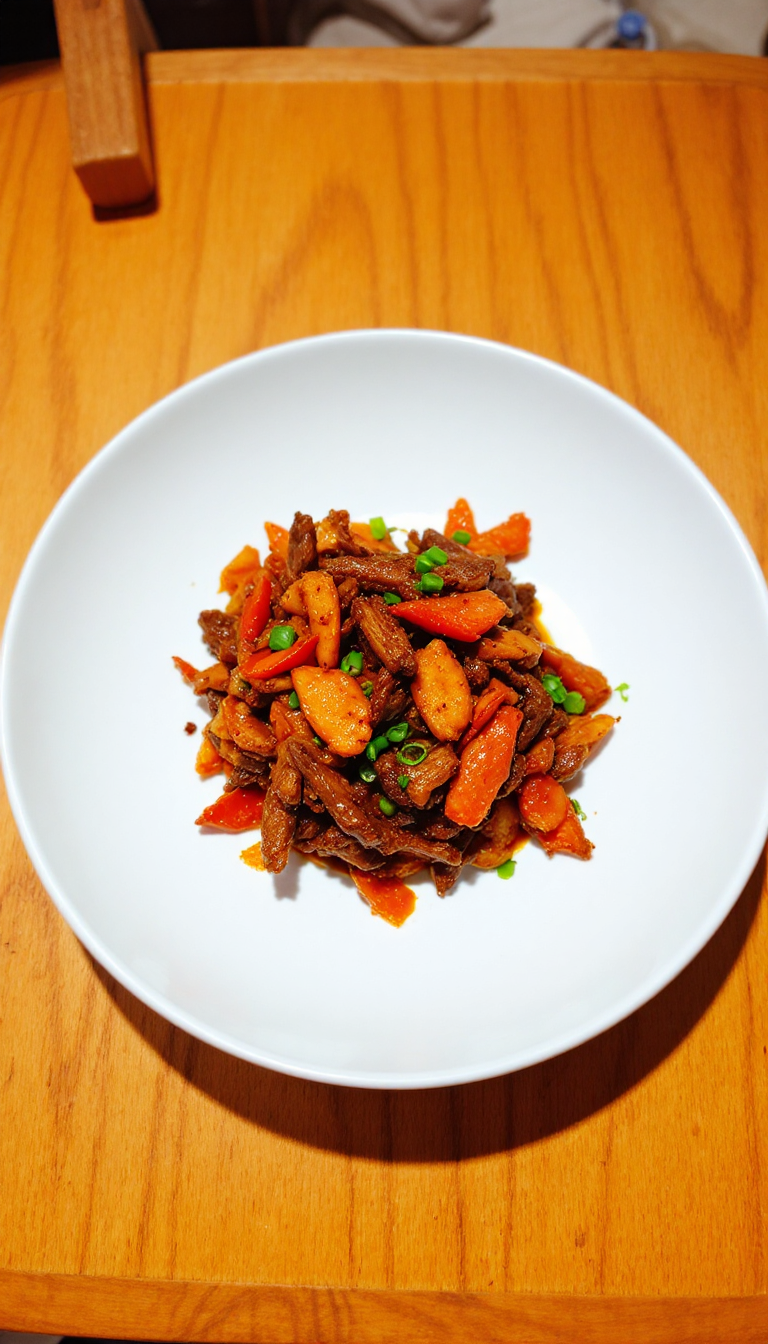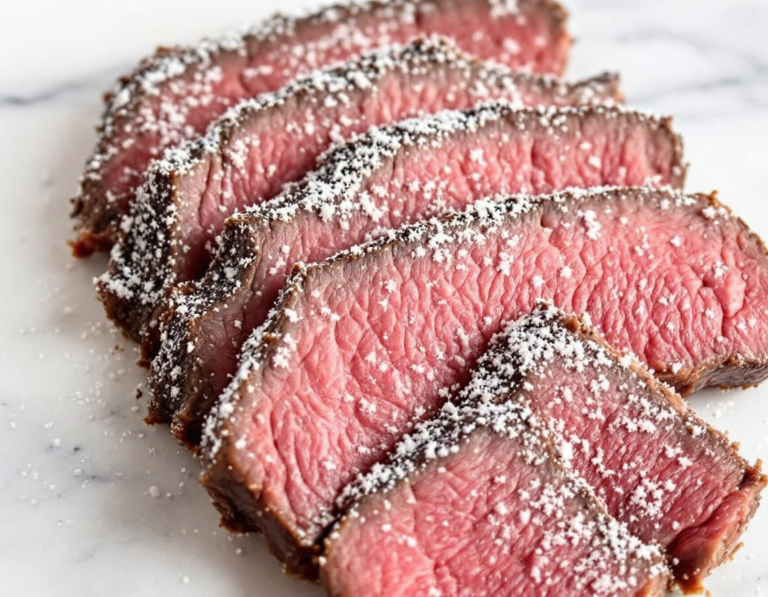There’s nothing quite like the rush of a busy weeknight—kids yelling, emails dinging, and, oh, what’s that, the cat knocked over the plant again? Amidst the chaos, the thought of cooking might feel daunting, yet here’s where this Mongolian Beef recipe swoops in like a superhero without a cape. It’s quick, it’s easy, and frankly, it’s a delicious escape into a world where your taste buds are the star of the show—even if just for a moment.
Steps
- Slice the flank steak into thin 1/4″ pieces and coat them with cornstarch, shaking off any excess. Set the coated beef aside.
- In a 10-inch skillet, heat 2 teaspoons of vegetable oil over medium-low heat. Add minced ginger and garlic, cooking until aromatic, approximately one minute.
- Pour soy sauce, water, and brown sugar into the skillet and bring the mixture to a boil. Let it boil for 3-5 minutes until it slightly thickens, then transfer to a small bowl.
- Heat 1 tablespoon of oil in a separate pan over medium-high heat and cook the beef in small batches for about 2 minutes, ensuring it browns without becoming fully cooked.
- Once all the beef is browned, return the beef and sauce to the skillet. Heat over medium until the mixture is hot and bubbly.
- Remove from the heat and stir in sliced green onions. Serve the Mongolian beef hot over rice.
Ingredients
- 2 teaspoons vegetable oil, plus an additional 2 tablespoons, divided
- ½ teaspoon fresh ginger, minced
- 4 cloves garlic, finely minced
- ½ cup reduced sodium soy sauce
- ¼ cup water
- ½ cup brown sugar, packed
- 1 pound flank steak or preferred beef cut, thinly sliced
- ? cup cornstarch
- 2 green onions, sliced
Nutritional Values
Calories: 1368 | Carbohydrates: 160g | Protein: 112g | Fat: 32g | Saturated Fat: 12g | Cholesterol: 272mg | Sodium: 6764mg | Potassium: 2052mg | Fiber: 4g | Sugar: 108g | Vitamin A: 240IU | Vitamin C: 8mg | Calcium: 248mg | Iron: 12mg
FAQ
- What is Mongolian Beef?
- Mongolian Beef is a quick and simple stir fry dish featuring thinly sliced beef cooked in a flavorful sauce made from soy sauce, brown sugar, garlic, and ginger. The sauce caramelizes, creating a slightly sticky coating for the beef.
- How can I make the beef tender for Mongolian Beef?
- To ensure tender beef, toss the slices with cornstarch before cooking. This natural tenderizer also helps thicken the sauce. Choose cuts like flank steak or sirloin, slice thinly against the grain, and avoid overcrowding the pan during cooking.
- What can I serve with Mongolian Beef?
- Mongolian Beef pairs well with rice, which absorbs the savory sauce. Add some steamed or stir-fried vegetables like broccoli, bok choy, or red bell peppers for a complete meal.
- How should I store leftovers?
- Store any leftover Mongolian Beef in an airtight container in the refrigerator for up to four days or in the freezer for up to four months. Reheat directly from frozen in the microwave or oven for a quick meal.
- Can I adjust the sweetness or saltiness of the sauce?
- Yes, you can modify the sauce to suit your taste by varying the quantities of brown sugar and soy sauce. Add a pinch of red pepper flakes if you prefer a spicy kick.
Tips
- Use Cornstarch for Tenderness: Toss the beef slices in cornstarch before cooking. This not only tenderizes the meat but also helps create a delightful crust and thickens the sauce.
- Cut Across the Grain: Always slice the beef across the grain into thin pieces. This method ensures that the beef remains tender and not chewy.
- Avoid Overcrowding the Pan: Cook the beef in small batches rather than all at once. Overcrowding can lead to steaming instead of searing, which affects the texture of the beef.
- Adjust the Sauce to Taste: Tailor the balance of sweetness and saltiness to your preference by adjusting the amounts of brown sugar and soy sauce in the recipe.
Equipment
- Wok – Useful for stir-frying the beef and sauce.
- 10-inch Skillet – If you don’t already have a suitable skillet for cooking the beef and sauce.
- Sharp Chef’s Knife or Meat Slicer – For thinly slicing the beef.
- Cutting Board – A dedicated cutting board, especially if you need one for meat preparation.
- Garlic Press – For mincing garlic if you prefer not to do it by hand.
- Ginger Grater – For finely mincing fresh ginger, if you don’t already have a tool for this purpose.

I’m Heather, the founder of Hearty Home Bites, a place where I share my love for delicious, approachable recipes and the joy of gathering around the table. What started as a personal project quickly grew into a trusted resource for home cooks everywhere.

